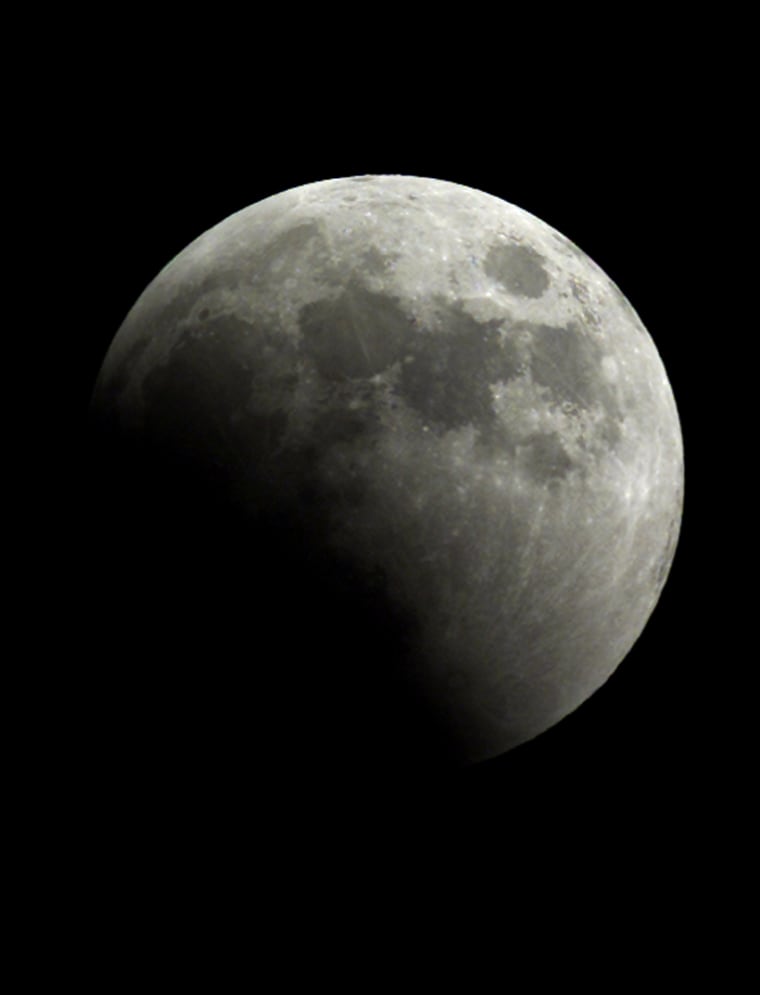Astronomy buffs and amateur stargazers turned out to watch a total lunar eclipse Wednesday night — the last one Earth will get for nearly two and a half years.
Tony and Carline Cazeau of Columbia brought their two daughters, Gabrielle, 12, and Valerie, 8, to the Maryland Science Center for the educational experience.
“It looks like chocolate,” Valerie said.
With the Earth passing directly between the sun and the moon, the only light hitting the full moon was from the home planet’s sunrises and sunsets, resulting in an orange and red hue. Visitors at the science center’s Crosby Ramsey Memorial Observatory peeked at the moon through its telescope.
Jim O’Leary, senior director of technology, IMAX, at the Science Center’s Davis Planetarium, said there are usually two or three lunar eclipses a year, but there won’t be any in 2005 or 2006.
“This one is a particularly long one,” he said of the eclipse, which began about 9:15 p.m. Eastern time and was expected to last around three hours and 20 minutes.
“It’s a spectacular show,” said Davis Sherman of Baltimore, who visited the science center with his 15-year-old son.
Outside the science center, Baltimore Astronomical Society President Darryl Mason projected the images from a powerful telescope onto a screen for passers-by to see. He said he hopes the eclipse helps introduce more young people to astronomy.
According to the National Aeronautics and Space Administration, total lunar eclipses give scientists a chance to assess the quality of Earth’s atmosphere. Ash from volcanic eruptions, for example, can make an eclipsed moon look much darker. The recent eruptions of Mount St. Helens in Washington were not expected to affect the eclipse because they consisted of far more steam than ash.
The last total lunar eclipse was May 4, but it wasn’t visible from North America, NASA said.
The next total eclipse of the moon will not be until March 2007.
